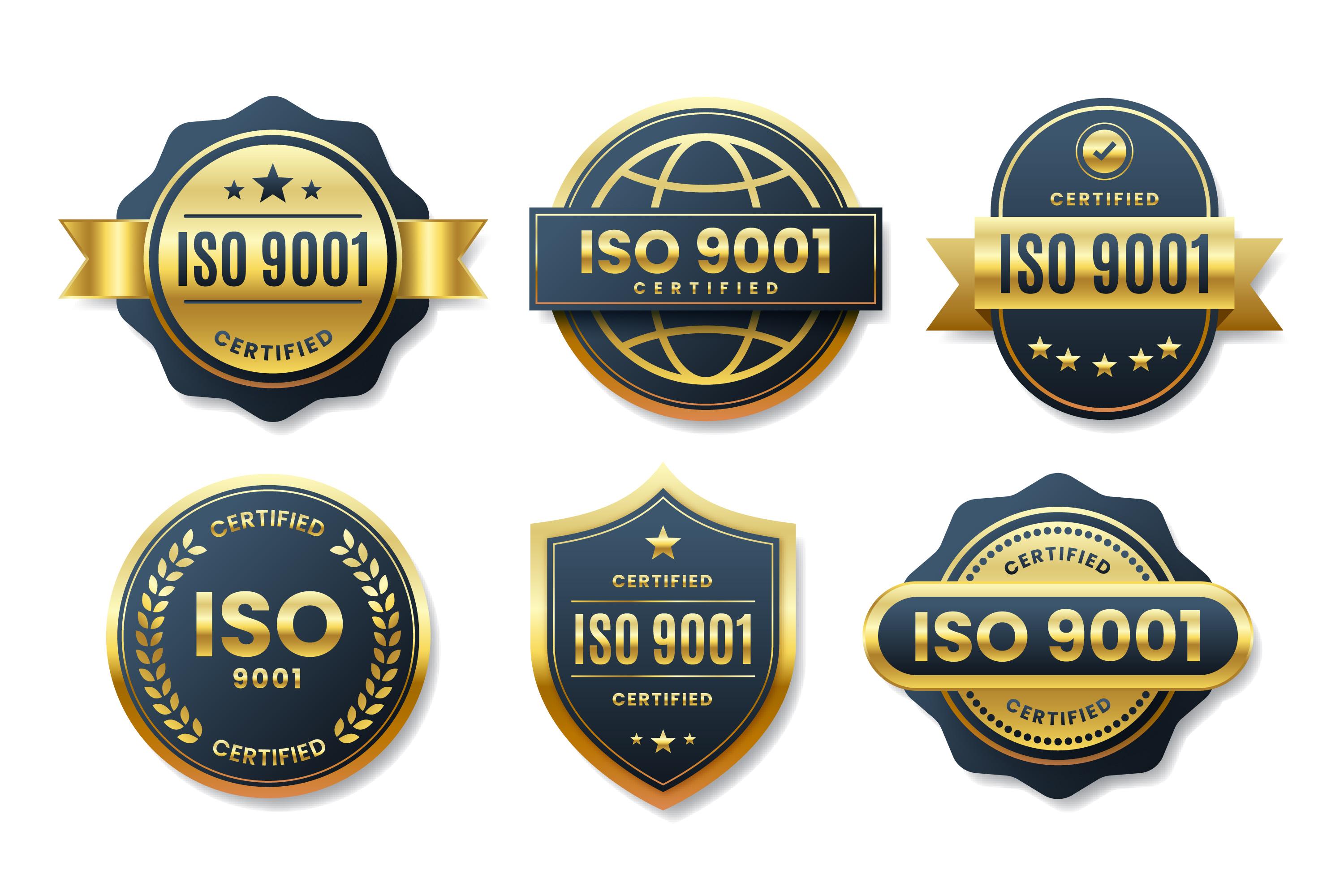Tag Archives: trademark filing
Filing of Certification Marks in India

A certification mark is a trademark used by a registered user to certify that his goods or services comply with the prescribed standards of the certifying agency. The best examples we see every day are the HALMARK for jewellery, FSSAI for food products, etc.
Certification marks are generally owned by trade associations or other centralized commercial groups. The owner of the mark sets standards for accreditation such that goods bearing the mark are certified to conform to particular standards of quality. The owner of the mark is not permitted to use the mark. The owner of a certification mark is compelled to license the use of the mark to anyone whose goods or services meet the standards established for certification.
Registration of a person as the proprietor of a certification mark gives that person rights which are subject to certain conditions and limitations, to use the mark to certify the goods and services that he has obtained the license for.
India has both Statutory and Non-statutory certification marks. Statutory marks are mandatory marks that certify a particular type of good, like the green dot on vegetarian food, the brown dot on non-vegetarian food, toxicity label on pesticides, etc.
Non-statutory marks are the marks which are encouraged by the government to certify certain goods. Example, Silk mark, the Ayush mark on herbal products, etc.
Section 2(1) (e) of the Trademarks Act defines a certification mark as a mark capable of distinguishing the goods or services in connection with which it is used in the course of trade which are certified by the proprietor of the mark in respect of origin, material, mode of manufacture of goods or performance of services, quality, accuracy or other characteristics from goods or services not so certified.
It can be any mark, a word, phrase, symbol or design, or a combination of various marks owned by a party who certifies the goods and services of others when they meet certain standards. The owner of the mark regulates the use of the mark by the others. Certification marks function as an indication of certain standards being met by the product.
Application for a certification trademark–
- An application for registering a trademark should be made to the Registrar by the person who proposes to be registered as the proprietor for such mark.
- The application should be accompanied with a draft of regulations for governing and authorizing the use of the certification trademark.
- The application shall be then examined for competency of the applicant to certify, credibility of the draft submitted, advantage of the general public, etc.
- The Registrar will then publish the application inviting oppositions for the same after which the registration of the certification trademark will be decided after hearing both the parties.
These draft regulations shall contain a description of the applicant, nature of the applicant’s business, particulars of the infrastructure and its financial arrangement. Additionally, it shall also mention its competence to administer the scheme, the characteristic indicated by the trademark with respect to the certification provided, submit an undertaking that no discrimination would take place and the manner in which it would monitor the use of the trademark in India.
A statement of case will also be submitted along with the application which sets out the grounds supporting the application. Thereafter, the rules of opposition, hearing, registration and renewal are similar to that followed for other trademarks. Regulations governing the use of the mark must be submitted to the Trade Marks Registry which should include provisions as to the cases in which the proprietor certifies goods or services. These may be altered by the Registrar on an application by the proprietor.
Infringement of Certification Trademarks –
According to Section 76 of the Trade Marks Act 1999, acts that do not constitute an infringement of certification trade mark are acts that are in accordance with the terms and conditions specified by the proprietor; use of the mark on goods and services as certified by the proprietor, or; on goods and services adapted to form part of or to be an accessory to the other goods and services for which the mark is registered, are not considered as infringement.
Cancellation of Certification Trademarks-
Cancellation can be sought before the Registrar, through an application in the prescribed manner by an aggrieved person, who shall give the proprietor a chance to oppose the application. The application can be on the grounds that the proprietor is no longer competent to certify the goods and services to which the registration was granted, or that the proprietor is not following the provisions provided in the register, or that the mark is no longer of public advantage.
Miscellaneous:
If the proprietor wishes to cancel or make any variations to the registration of the certification trademark or does so on the order of the Registrar, he must file an application under Form TM-O and set forth the grounds on which the application is made.
Any alteration to the regulations can be made through Form TM-M. These alterations are then advertised by the Registrar in the Journal. If the proprietor intends on the assignment or transmission of the certification trademark, an application under Form TM-P shall be made to obtain his consent.
Fees and Forms:
The fees prescribed for the forms mentioned above are stated below:
|
Form |
Particulars |
Fees (Amount in INR.) |
|
|
Physical filing |
E-filing |
||
|
Application for registration of a Certification trademark |
|
|
|
|
1)Where the applicant is an individual / start-up / small enterprise |
5,000 |
4,500 |
|
|
2) In all other cases |
10,000 |
9,000 |
|
|
Alteration of regulation of Certification trademark |
2,000 |
1,800 |
|
|
Application for cancellation or variation of registration of Certification trademarks |
3,000 |
2,700 |
|
|
Application for the Consent of Registrar to the assignment or transmission of a Certification trademark |
2,000 |
1,800 |
|
We hope this article was a useful read.
Please feel free check our services page to find out if we can cater to your requirements. You can also contact us to explore the option of working together.
Best regards – Team InvnTree
This work is licensed under a Creative Commons Attribution-Non Commercial 3.0 Unported License
Registering a mark that has been In-Use

Can I register a trademark that I have been using for a long time?
Yes, but the requirements for registration will differ. The proprietor will have to submit an affidavit attaching evidence of use of the mark. Business names are just a name to be recognized, but Trademarks are property. If you choose to get your trademark registered at a later stage, a search is better to be conducted so as to be sure about the distinctive usage of your trademark.
One should not have any problem if one is a Well-Known mark in the area in which one is seeking registration. Otherwise, you can expect objections and even refusal of registration. In case of an infringement, you can claim rights of passing off or on valid grounds of objection like very long usage and popularity. If the situation arises that both parties have established valid and concurrent use, they could either be made joint owners of the trademark, or allowed to continue business simultaneously but distinct of each other. On the basis of the ‘date of first use in commerce’, and recognition of the mark, one may be granted registration. There is also a chance that one may be granted a trademark similar to that of another on the grounds of ‘use in good faith’.
The date of first use in commerce is the date when the goods were first sold or transported under the mark in any type of commerce. This use should be good enough for customers to differentiate the mark from that of the other marks in the market. It need not only be use of the mark in connection with selling the goods or services but can also be a mark used for the purpose of advertising, marketing, whatever it might be. And then the second element is if it was followed by activities providing a continuous effort or intent to use the mark. One cannot start using a mark, stop using it and then claim rights over a mark based on the ‘date of first use’. It should be continuously used at least for a period of five years and three months before a person makes an application for the trademark.
For every applicant, whether foreign or domestic, the date of first use of a mark is the date of the first use anywhere, in India or elsewhere, regardless of whether the nature of the use was local or national, intrastate or interstate, or of any other type, as far it is made for use in commerce and continuously.
Section 34 of the Trademarks Act, 1999 deals with prior users and their rights. An exclusive right obtained by registration cannot be used to interfere or restrain a person from using a mark which he is using from a prior date. On rare accounts, two or more persons can register same or similar trademarks with limitations prescribed by the registrar. The prior users get the right to be protected only on the fulfillment of following conditions:
- The mark should have been used from a date prior to the use of the registered trademark, or prior to the date of registration, whichever is earlier.
- The prior use claimed must be by the proprietor himself or his predecessor in title.
- The use claimed must be in continuous use.
The Registrar cannot refuse registration of the prior mark because of the existence of the registered trademark on the register. It is not sufficient to plead use prior to registration. The prior user must show that they were substantial users prior in use to the application for registration.
Section 34 can be taken as a defense against infringement. This Section cannot be applied to obtain an injunction restraining the registered proprietor from interfering with the right of the prior user to use the trademark. The importance of “prior user” is reflected in Titan Industries Ltd. v. Registrar of Trademarks, where an application was filed for registering trademark ‘Classic’ in respect of clocks, watches, time pieces and other parts included in Class 14 claiming usage since 1987. But when the application was advertised in the Trademark Journal, Appellants filed their notice of opposition on the grounds that they are manufactures and dealers of wrist watches and they are the proprietors of ‘Titan’ word per se. They further claimed that they were the registered proprietors of the trademark Titan “Classique” and that they are popularly known as ‘classique’ or ‘classic’. Titan Industries contented that they had registered the trademark “Titan Classique” as early as 25/08/1986 and it is also pointed out that the second respondent company was incorporated in the year 1988 only. This contention by ‘Titan’ was considered by the IPAB and the case was decided accordingly, emphasizing on the importance of prior date of use.
Evidences of prior use:
- Advertisements and sales campaigns,
- Proofs of inherited business using the mark,
- Invoices and Bills,
- Website pages,
- Survey reports
We hope this article was a useful read.
Please feel free check our services page to find out if we can cater to your requirements. You can also contact us to explore the option of working together.
Best regards – Team InvnTree
This work is licensed under a Creative Commons Attribution-Non Commercial 3.0 Unported License
Associated Trademarks

Associated Trademarks refer to those marks which are owned by the same proprietor in respect of identical or similar goods and services, which would otherwise be likely to deceive or cause confusion if used by a person other than the proprietor. These marks are entered on the register as associated with the earlier registered trademarks in order to prevent the existence of multiple rights in the market.
Associated trademarks are generally used by businesses that expand their operations to newer goods and services. For instance, the proprietor of AMUL, which continuously expands its range of products, would associate all marks pertaining to their various products under the original registered mark to prevent any confusion and so that consumers may associate all new products with their brand.
Let’s take another example of ‘APPLE’ which started its business by selling computers and later expanded its business to other consumer electronics like iPhones, iPods, iPads, Apple Watch and other such goods. These goods might belong to the same class while filing for a trademark registration, but association with its primary mark that has acquired reputation, goodwill and brand value, would help consumers identify these products with the brand and prevent any likelihood of confusion.
The Registrar, while examining an application for a trademark registration will check if the subject of the application is identical with:
1) Another trademark which is registered,
2) Another mark which is applied for registration,
3) The same proprietor,
4) A similar or identical description of goods and services.
If the Registrar finds that the application is identical to another mark as given above, he shall require them to be registered as associated trademarks.
An applicant/agent can indicate in the application for trademark registration (Form TM-A) if they are associated with any earlier trademarks.
If they fail to do so, the Registrar may suggest their association in the examination report. The applicant will then have to amend the application by filing Form TM-M stating their intent to associate with another trademark.
In case the applicant wants to dissociate a mark from the associated trademarks, Form TM-P must be filed for dissolution of association between trademarks, if he is satisfied that there is no likelihood of confusion or deception.
The fees for the above forms are mentioned below:
|
Form |
Particulars |
Fees (Amount in INR.) |
|
|
Physical filing |
E-filing |
||
|
TM-A |
Application for registration of a trademark |
|
|
|
1)Where the applicant is an individual/startup/small enterprise |
5,000 |
4,500 |
|
|
2) In all other cases |
10,000 |
9,000 |
|
|
TM-M |
Amendment of Application |
1,000 |
900 |
|
TM-P |
Dissolution of Association between trademark |
1,000 |
900 |
The primary object of associated trademarks is to establish a relation between the brands falling under the same ambit of goods and services in order that an identity and brand value is created in the minds of the consumer. This will prevent the creation of multiple rights in the market by associating all marks with one primary mark. But, if they become distinct in the market, then the proprietor can file for dissolution of association. Thus, associated trademarks can be beneficial to those entities who wish to expand their range of goods and services in the market.
We hope this article was a useful read.
Please feel free check our services page to find out if we can cater to your requirements. You can also contact us to explore the option of working together.
Best regards – Team InvnTree
This work is licensed under a Creative Commons Attribution-Non Commercial 3.0 Unported License
Nitty gritty of Assignment of Trademarks in India

Assignment of trademark refers to the power of the proprietor of a trademark to transfer the trademark to another person for consideration. Both registered and unregistered trademarks can be the subject of an assignment. It is important to keep in mind that when such an assignment takes place, the person transferring the trademark should present effectual receipts for any consideration of such assignment.
Similar or identical trademarks cannot be assigned to vest exclusive rights in more than one person if such trademarks are in relation to the same goods and services or same description of goods and services. If such an assignment is made, it is invalid. The proprietor of a registered trademark who proposes to assign such a trademark has to submit to the Registrar a statement of case, setting out the circumstances of the assignment. The Registrar, having regard to the similarity of goods and services, will issue a certificate stating whether such an assignment is valid or not. If the Registrar grants a Certificate validly accepting the assignment, an application for registration of the title to the trademark should be made by the assignee within six months from the date of the issue of the certificate.
Let us consider the example of a proprietor of the mark ‘SLURPZZ’ who is engaged in the business of selling sweets. If the proprietor intends to assign the trademark to ‘A’ to sell sweets and thereafter to ‘B’ to sell sweets and savories, the proprietor will have to obtain a certificate from the Registrar permitting the assignment of the mark over the same goods to two separate entities.
Assignment of a trademark can be made with or without goodwill. An assignment for trademark is made with goodwill when the assignor transfers the rights and value of the trademark and allows the assignee to use it for the products associated with it.
For example, if ‘P’, the owner of the trademark ‘NEEW’ dealing in footwear assigns it to ‘Q’ and also lets ‘Q’ use it for selling footwear then such a trademark is assigned with goodwill.
An assignment for trademark is made without goodwill when the assignor assigns the trademark to the assignee only with regards to dissimilar products. The assignee can only use the trademark for dissimilar products and is restricted from using it for the same products as used by the assignor. For example, if ‘P’, the owner of the trademark ‘NEEW’ dealing in footwear, assigns it to ‘Q’ where ‘Q’ can use it for any product except footwear then that is an assignment without goodwill.
When an assignment of a trademark takes place other than in connection with the goodwill of a business, the assignment shall not be effective unless the assignee applies to the Registrar for directions with respect to the advertisement of assignment within a period of six months. This time of six months can be extended for another period of three months if necessary. The assignee shall then make the advertisement as directed by the Registrar.
When a person becomes entitled to a trademark by assignment, he shall apply to the Registrar to register his title and the Registrar shall, on receipt of such application, register him as the proprietor of that trademark. The Registrar can ask the assignee for evidence for proof of title or any further evidence when there is reasonable doubt about veracity of any statement. The Registrar can also refuse to register an assignment until the rights of parties have been settled by a competent Court, where validity of an assignment is in dispute between the parties.
Cost for assignment of Trademark
|
Cost payable for |
Physical filing cost |
E-filing Cost |
|
Application for registration of assignment |
10,000 |
9000 |
|
Application for Certificate of Registrar in case of trademarks for same goods and services |
3000 |
2700
|
|
Application for extension of time for direction of Registrar regarding investment |
2000 |
1800 |
We hope this article was a useful read.
Please feel free check our services page to find out if we can cater to your requirements. You can also contact us to explore the option of working together.
Best regards – Team InvnTree
This work is licensed under a Creative Commons Attribution-Non Commercial 3.0 Unported License
Assignment and Licensing of Trademarks in India

The Trade Marks Act 1999 was amended to suit advancing trade practices and to abolish unfair competition among brands. The Act is enacted with an intention to protect the rights of a proprietor who invests money, time and work into his trademark and building its reputation in the market, and the consumer should get equal protection from being cheated into buying a product of a sub-standard quality, just because it was displayed with either the same mark by a person who is not the proprietor or authorized user of the mark, or a mark that is deceptively similar to the proprietor’s mark.
The Act allows a registered proprietor to assign or license out the use of his trademark. The assignment and licensing can be made with or without the goodwill of the business concerned. A trademark need not be registered to be assigned or licensed.
Assignment of a trademark
Section 2(b) of the Trade Marks Act 1999 describes “assignment” as an assignment in writing by an act of the parties concerned. Assignment is the transfer of proprietary rights. Proprietary rights over a few goods or services, or over all the goods or services registered by the proprietor may be assigned, unless it is an associated trade mark. It can also be in favour of more than one person if they operate in different countries.
An assignment thus should be made in writing, where rights are transferred legally, but a trademark cannot be assigned or transmitted if such an assignment creates multiple rights in more than one person as it could deceive or create confusion in the general public.
The assignment of a trademark has to be registered with the Registrar of Trademarks within a period of six (6) months from the date of assignment (or with a permitted extension of three more months). The Registrar will then advertise the assignment so as to inform the public of such assignment. Though the registration of an assignment is not mandatory, it is better to get it registered since an assignment that is not registered will not be a valid proof of the assignment.
Licensing:
Licensing occurs where the owner or authorized user of a trademark, allows a licensee to use his trademark for a royalty paid to him for a particular term.
Licensing is done by a licensing agreement containing the terms and conditions of use of the trademark by the licensee. The terms must include – names of the parties, terms of sub-licensing, duration of the license, territory for usage of the trademark, specification of the goods and services to be manufactured under the mark, royalty to be paid and term for such payments, terms for quality control, security terms, and termination of the license among others.
Licensing can be done through-
- Merchandising: This is a type of licensing where a simple product is enhanced with the attachment of a famous brand name. This is also the most popular way of advertising used by many famous trademarks. For example, we see famous trademarks on mugs, bags, phone covers, etc.
- Franchising: Here, a licensee pays a royalty for the rights to exactly implement the licensor’s business model and use the licensor’s trademark on the permitted goods and services. A famous example is that of the ‘Café Coffee Day’ outlets.
- Co-branding: Here, proprietors of two trademarks coordinate with each other to derive mutual benefits from the goodwill enjoyed by both marks. A very popular brand like ‘Dell’ co-brands with ‘Intel’ processors.
- Brand enhancement: Here, a licensor may team up with another to use his brand name on a different product.
Assignment and Licensing of trademarks help the proprietor to generate more revenue, enact broader and easier territorial expansion, enjoy protection from illegal use of one’s marks, develop easy advertisement across different places, increase consumer recognition and popularity among other benefits.
We hope this article was a useful read.
Please feel free check our services page to find out if we can cater to your requirements. You can also contact us to explore the option of working together.
Best regards – Team InvnTree
This work is licensed under a Creative Commons Attribution-Non Commercial 3.0 Unported License
ADVANTAGES OF A REGISTERED TRADEMARK

In India, it is not essential that a mark needs to be registered. Unregistered trademarks enjoy a certain degree of protection as well. However, registering a trademark allows the proprietor of the trademark to enjoy certain benefits. They are listed below:
- Exclusive Right:
The successful registration of a trademark gives the proprietor the exclusive right to use the trademark, in relation to the goods and services for which the mark is registered. So if ‘A’ registers the word ‘LEX’ for wallets, the same cannot be used by ‘B’ for wallets, but may be used for pens. This ensures that the consumers will be able to distinguish and identify the proprietor’s mark with respect to that particular good or service, thereby enhancing his reputation in the market.
- Proof of validity:
In the event that there is any litigation with relation to the trademark, then the registration of the trademark would become evidence, at face value, of the validity of the mark.
- Lower Burden of Proof:
A registered trademark is afforded a higher degree of protection. A proprietor for a registered trademark may sue for infringement of the trademark. In the case of an unregistered trademark, there is recourse for unjust use of the mark, under passing off.
Infringement is more stringent than passing off. In other words, the level of proof required to establish infringement is lower than that of passing off. For proving infringement, one only needs to establish that there is deceptive similarity between the two marks. However, for proving passing off, there needs to be proof of deceptive similarity and confusion caused among the public, as well as damage to the reputation of the proprietor of the unregistered mark. For instance, if ‘A’ needs to prove that his mark ‘LAKME’ for cosmetics, has been infringed by the mark ’LIKEME’, then he must prove that the elements of deceptive similarity are met. If ‘A’ does not have a registered trademark, he must first prove that ‘LAKME’ has accrued certain goodwill, that it has a reputation. Second, he must prove that there is deceptive similarity. Thereafter, he must establish that there is confusion caused among the public, which causes them to assume ‘LAKME’ products, when they are actually buying ‘LIKEME’ products. Finally, A must show that there has been actual or reasonable loss suffered by the deceptive similarity of the infringing trademark.
Also, in a suit for passing off, the proprietor will need to prove continued, uninterrupted use of the trademark. However, by virtue of the second point discussed here, the proprietor of a registered trademark will not need to do so.
- International recognition:
Registering the trademark in India would grant some international benefits for the proprietor. First, as India is a signatory to the Paris Convention for the Protection of Industrial Property, registering a trademark in India would give certain priority and privilege when the proprietor would want to register the trademark in any other country which is a signatory to the Convention. Secondly, by virtue of the Trademark Amendment Act of 2010, the proprietor may register the trademark in any country under the Madrid Protocol.
Therefore, registering a trademark is beneficial in many ways, and ensures the monopoly over the use of the mark, for related goods and services, in a less cumbersome manner than the system in place for unregistered trademarks.
We hope this article was a useful read.
Please feel free check our services page to find out if we can cater to your requirements. You can also contact us to explore the option of working together.
Best regards – Team InvnTree
This work is licensed under a Creative Commons Attribution-Non Commercial 3.0 Unported License
10 THINGS TO CONSIDER WHILE SELECTING A TRADEMARK

Choosing a good trademark is very important for any business. We have to consider many points in choosing a good trademark.
1. It should be easy to speak, spell, read and remember.
Eg. Tata, Puma, Adidas
2. Avoid selecting a trademark that is identical to other trademarks in the same line of business. However, you may select a trademark that is similar, but not confusingly similar.
Eg. You cannot select “InventiveTree”, to sell IP services under that trademark, while an earlier trademark, “InvnTree” exists, and covers IP services. However, you can select “InnovationTree”, to sell IP services under that trademark, while an earlier trademark, “InvnTree” exists, and covers IP services.
3. Do not select trademarks that are similar to well-known trademarks.
Eg.Tata, Sony, Honda, Google,etc.
4. Avoid selecting descriptive marks that merely describe the goods or services.
Eg. “Coffee shop” for a coffee bar, “Fragrances” for a store selling perfumes, “Running shoes” to sell shoes
5. Avoid using popular family names.
Eg. ‘Aggarwals’, ‘Shetty’s’, ‘Kapoor’
6. Make the mark fanciful and arbitrary. It is always preferred to make up or invent new words or phrases or use ordinary words that are not directly associated with the product.
Eg. “Amul” for dairy products, “Myntra” for clothing.
7. Avoid selecting adjectives which have a direct reference to the character or the quality of a product.
Eg. “Perfect Apparel” for clothes, “Fast cars” for automobiles
8. Avoid selecting a trademark that is being used by someone else in a foreign country.
Eg. ”Banana Republic”, “Target”, “John Deere”
9. Avoid selection of Geographical names, as nobody can have a monopoly right over it.
Eg. “Darjeeling tea” to sell tea, “Banaras Silk” to sell sarees
10. Avoid adopting marks that contain scandalous or obscene matter or that are likely to hurt religious sentiments.
Eg. Use of holy books as trademarks are prohibited like “Ramayana” for incense sticks.
We hope this article was a useful read.
Please feel free check our services page to find out if we can cater to your requirements. You can also contact us to explore the option of working together.
Best regards – Team InvnTree
This work is licensed under a Creative Commons Attribution-Non Commercial 3.0 Unported License

 Follow
Follow

